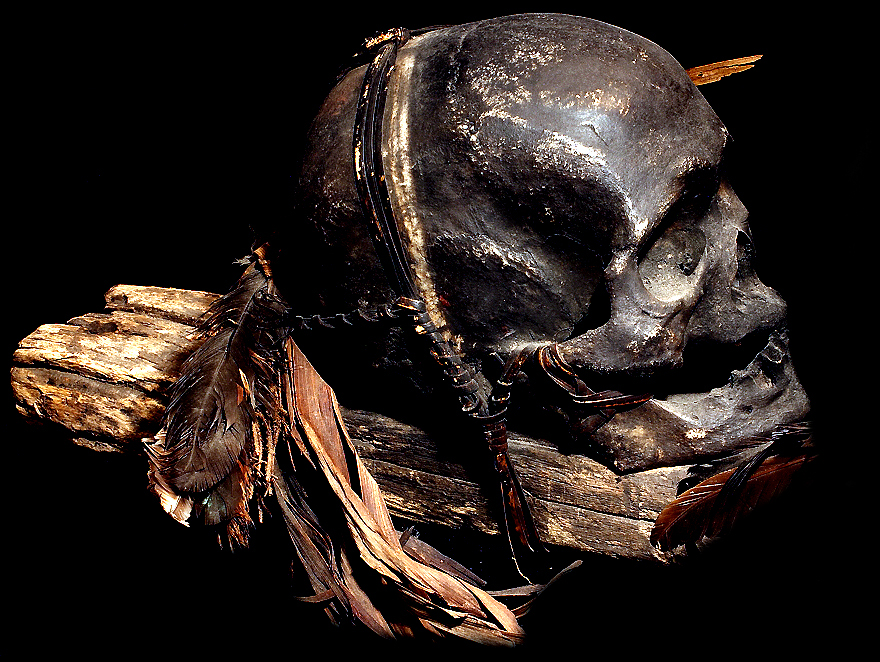
IFUGAO: TWO HEADHUNTED HUMAN
TROPHY SKULLS MOUNTED ON A WOODEN BOARD #3
HUMAN SKULLS, WOOD, RATTAN, FEATHERS, FIBER
|
TWO HEADHUNTED HUMAN TROPHY SKULLS MOUNTED ON A WOODEN BOARD #3 |
 IFUGAO: TWO HEADHUNTED HUMAN TROPHY SKULLS MOUNTED ON A WOODEN BOARD #3 HUMAN SKULLS, WOOD, RATTAN, FEATHERS, FIBER |
|
among rice terraces. Ifugao huts; made without saws or tools, are decorated in traditional Ifugao motif on carved beams, doors, hearths, cabinets and moldings in each tribal domicile. THE IFUGAO TRIBE, FROM THE PHILIPPINES, PLACE HEAD HUNTED HUMAN TROPHY SKULLS OUTSIDE OF THEIR HUTS, AS WELL AS, MOUNT THEM OVER THEIR HEARTHS INSIDE OF THEIR HOMES. The Ifugao society is based almost exclusively on kinship. Each individual is the center of a kinship circle which extends to the third cousin. These family units are of the utmost importance to the Ifugao when feuding or headhunting! The Ifugao lack political organization and have relied on marriage alliances and inter-tribal trade agreements. The Ifugao recognize temporary "go-betweens" who settle disputes in terms of customary law; know as "Peace Packs." The aristocrats, or land owners, are the upper class who maintain prestige by sponsoring periodic feasts that are usually conducted at harvest time when ritual blood animal sacrifice is offered to Ifugao deities via "Bulul" statuary. Ifugao religion has an elaborate cosmology and more than a thousand deities of various classes. Ancestral and other deities are invoked to cure illness or prevent death with the aid of rice wine, feasting and ritual "Canao." THE DAYAK, IFUGAO, AND NAGA HUMAN SKULLS ARE HEAD HUNTING TROPHIES. THE ASMAT "ANCESTOR" SKULLS. THE DIFFERENCE IS; HEAD HUNTED SKULLS ARE ACQUIRED FROM ENEMY ANCESTOR SKULLS ARE COLLECTED AND VENERATED TO REMEMBER DECEASED FAMILY MEMBERS. THE IFUGAO COLLECT BONES OF DEAD RELATIVES; WRAP THEM IN TRIBAL TEXTILES, AND STORE THEM IN THE RAFTERS UNDER THEIR HUTS. HUMAN SKULLS AND SKULL CAPS FROM NEPAL ARE RITUAL OFFERTORY VESSELS THAT ARE USED AS DRINKING CUPS IN TIBETAN BUDDHIST CEREMONIES. |
| |